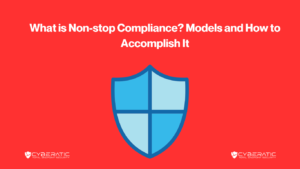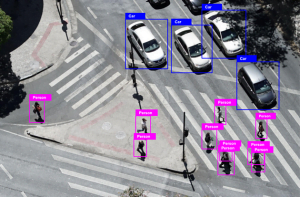Interoperability and security: why upgraded infrastructure needs both
If you ask 100 people what infrastructure means to them, you’ll get about 99 different answers. This wide range of definitions makes the term ambiguous and can easily lead to miscommunications between the construction industry and other organizations, such as the government and law enforcement agencies. The confusion usually stems from a misunderstanding of what infrastructure really means and what assets must be maintained in order to keep us safe and make our daily lives possible.
What Is The Need For Interoperability?

In a world where technology is constantly changing, it’s important for different devices and systems to be able to communicate with each other. That’s where interoperability comes in. Interoperability is the ability of different devices and systems to work together. It’s what allows you to use your smartphone to call a friend on their landline, or listen to music from your computer on your MP3 player.
Without interoperability, you’d have to buy completely new devices just because one of them changed. Imagine how much more expensive that would make everything!
What Is The Need For Security?:
We’ve all heard about hackers stealing passwords and breaking into bank accounts, but there are many more serious threats as well. Security threats can come from outside (people trying to break into your home) or inside (employees stealing company secrets). And sometimes it’s hard to tell who the real threat is!
Continuation (six+ sentences): That’s why we need cybersecurity experts–to protect our personal information and help companies keep trade secrets safe. upgraded infrastructure
What are the Challenges in Adopting New Technology?

The first challenge upgraded infrastructure is developing a clear business case for the new technology. Without a solid business case, it can be difficult to justify the investment to decision-makers. The second challenge is finding the right technology that will meet the specific needs of your organization. With so many options on the market, it can be difficult to know which one is the best fit. The third challenge is ensuring that the new technology integrates seamlessly with existing systems. This can be a complex and time-consuming process.
How Can We Overcome The Challenges?
As we work to upgrade our infrastructure, we must keep in mind the need for both interoperability and security. Interoperability ensures that our systems can communicate and work together, while security protects us from cyber threats. Unfortunately, these two goals are often at odds with each other. How can we overcome this challenge?
upgraded infrastructure
Where do we go from here?
Now that we know the importance of interoperability and security in upgraded infrastructure, what’s next? How can we ensure that these two factors are always considered when making changes or improvements to our systems? There are many examples where these two qualities have been implemented successfully. The most common example is open-source software. Open-source software is shared between developers as a way to collaborate on projects and provide more options for consumers. Open-source software is also free for anyone to use, which means there’s no investment required by the user. It also means that it provides a community with a platform for collaboration and problem solving.
Balancing National Security with Human Rights
upgraded infrastructure

A computer virus called ‘Black Energy’ is believed to have been used to disrupt electricity grids, similar to Stuxnet. Cyber warfare has had a significant impact on life in many countries, including South Korea and Iran. The questions surrounding cyber security are what rights do we give up for protection? Is privacy a right or something that needs to be sacrificed for national security? In a world where hackers can get into even secure systems, how can we build defenses without potentially killing people in other parts of world? Does being connected by technology at all times make us safer or more vulnerable? How important is it that governments share information between them? cyber war of upgraded infrastructure
For most of us, our phones have become an extension of ourselves. Whether you’re an iPhone person or a Samsung devotee, you can’t imagine life without your device. With that in mind, it’s easy to see why mobile privacy has become such a big issue. But there are ways to keep tabs on people who use your device without letting them know they’re being watched. Here are five top-rated USB charger spy tools that help you monitor your loved ones and protect yourself from hackers, data thieves and more upgraded infrastructure







